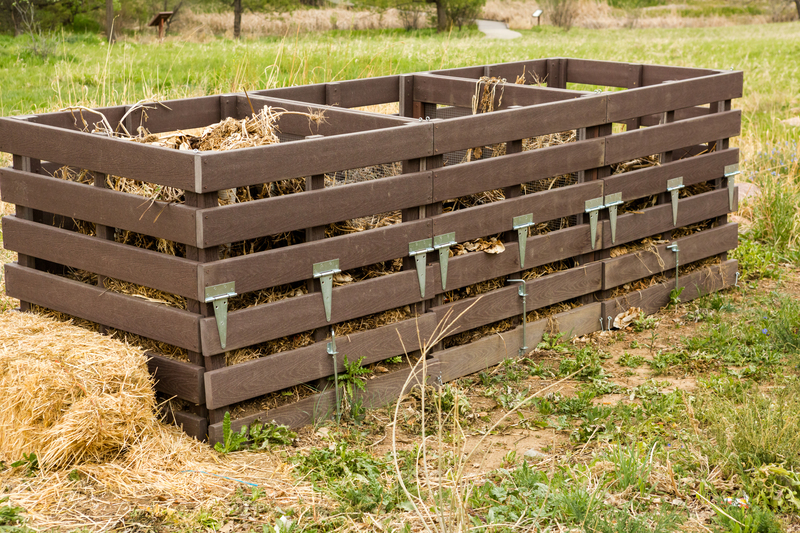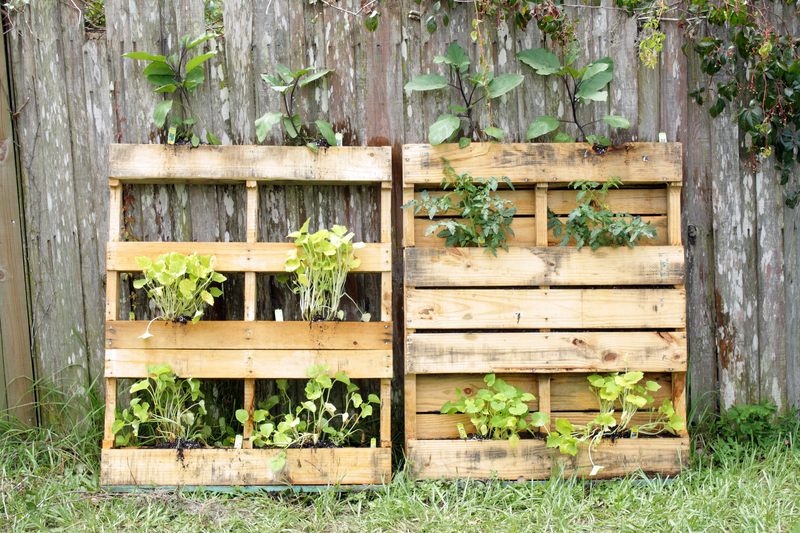Exploring Historical Waste Solutions: Lessons from the Past
Waste management is a pressing issue in our modern world, yet the challenge of dealing with waste is as old as civilization itself. By exploring historical waste solutions, we gain insights into humanity's long-standing relationship with rubbish, the ingenious methods our ancestors used to manage waste, and how these historical approaches can inform contemporary strategies. This article delves deep into the evolution of waste disposal, highlighting notable innovations, societal customs, and policy-driven decisions that shaped communities throughout history.

The Roots of Waste Management: Ancient Civilizations
To truly understand historical methods of waste management, we must journey to the distant past. Ancient societies confronted waste using creative solutions tailored to their environments, resources, and cultural priorities.
Mesopotamian and Egyptian Practices
- Mesopotamia (c. 3500 BCE) established the earliest known organized waste removal systems. Archaeologists have found evidence of clay sewer pipes and cesspits in urban layouts.
- In ancient Egypt, waste disposal intertwined with religious cleanliness. Garbage was removed from homes and disposed of in designated pits outside city walls, limiting exposure to disease.
The Indus Valley and Wastewater Innovation
- The Indus Valley Civilization (c. 2500 BCE) showcased remarkable urban planning with sophisticated drainage and covered sewer systems. These early pioneers recognized the importance of separating waste from living spaces.
- Individual homes boasted private toilets connected to vertical chutes, demonstrating an early form of what we might call "domestic sanitation engineering."
Greek and Roman Waste Disposal Techniques
The classical world further advanced the cause of waste management in ancient history.
- Ancient Greeks mandated regulations against dumping trash on streets. Households collected waste, which was later carted away.
- The Romans innovated with the Cloaca Maxima, an immense sewer system that has endured for millennia. Public bathhouses also relied on complex pipeline networks to ensure the safe removal of wastewater.
Medieval Waste Strategies: From Resourcefulness to Regulation
As populations expanded during the medieval era, so did the waste problem. Yet, communities adapted with a blend of practical reuse, informal collection practices, and, eventually, organized regulation to tackle mounting refuse.
Reusing and Recycling in Medieval Times
- Before mass production, waste was frequently reused or repurposed. Clothing was passed down until it became rags; metal objects were melted and recast.
- Animal bones, broken pottery, and food scraps had secondary uses, while organic waste was composted or fed to animals.
Urban Waste Collection and Street Cleaning
- Medieval towns employed scavengers or "rakers" to collect refuse from the streets. In London, householders were required to keep the area in front of their homes clean and free from debris.
- Fines and public shaming (such as the infamous "dung carts") were used to enforce cleanliness and discourage careless littering.
Chamber Pots, Night Soil, and Early Sewage Systems
- Most people relied on chamber pots, which were emptied into cesspools or directly onto streets, resulting in ongoing sanitary challenges.
- The lucrative trade in "night soil"--human waste used as fertilizer on farms--flourished, foreshadowing the recycling and upcycling practices we value today.
The Industrial Revolution: Mounting Waste and Municipal Solutions
The dawn of industrialization in the 19th century led to explosive urban growth and unprecedented levels of rubbish. Rapid changes elicited bold experiments with waste control solutions on a larger, citywide scale.
Sanitation Reformers and the Birth of Modern Waste Management
- Public health crises spurred municipal leaders to establish regular trash collection, landfill creation, and the construction of underground sewer networks.
- Visionaries such as Sir Edwin Chadwick advocated for sanitary reforms, linking urban cleanliness with health outcomes and influencing policy worldwide.
Combating Waste with Incineration and Recycling
- Early attempts at waste disposal included incineration (or "destructors"), introduced in Britain in the 1870s. These plants addressed urban waste but raised concerns about air quality and emissions.
- Meanwhile, the world saw the beginnings of organized recycling programs: rag-and-bone men in Victorian London collected reusable items for profit, and by the late 19th century, American cities were separating paper, metals, and organic waste.
The Advent of Landfills and Dumps
- The era also witnessed the rise of "sanitary landfills," designed to minimize odors and vermin, improve hygiene, and conserve space by compacting waste under layers of soil.
- While landfills solved some problems, they also created new challenges: leachate contamination, methane emissions, and the long-term fate of non-biodegradable materials.
Historical Waste Solutions Around the World
No two cultures approached waste in exactly the same way. By exploring historical waste solutions globally, we uncover diverse traditions driven by geography, beliefs, and necessity.
Japanese Nagaya and "Mottainai"
- In Edo-period Japan, multi-family houses called nagaya featured shared bathroom facilities, with urine and fecal matter sold to farmers as fertilizer--a system maximizing resource use and minimizing waste.
- The philosophical concept of mottainai ("waste nothing") permeated daily life, fostering widespread repair, reuse, and a circular approach centuries before zero-waste movements.
Native American Waste Wisdom
- Many Native American tribes practiced near-zero-waste lifestyles, using every part of hunted animals and integrating organic refuse back into the land. Shell mounds and midden heaps remain archaeological evidence of their environmental stewardship.
Waste Management in Islamic Golden Age Cities
- During Islam's Golden Age, urban centers in the Middle East and North Africa excelled in urban cleanliness. Cities like Baghdad and Cordoba had laborers responsible for street cleaning and waste removal, reflecting the high value placed on hygiene in Islamic teachings.
Major Historical Waste Innovations
Composting and Anaerobic Digestion
- Composting practices date back at least 2,000 years, part of ancient Chinese agriculture. Farmers decomposed vegetable matter and manure to fertilize crops, a method still vital for organic waste management today.
- Early forms of anaerobic digestion--decomposition in the absence of oxygen--were also observed, generating biogas for fuel in some Asian societies.
Recycling Metals
- Bronze Age civilizations recycled precious metals by melting down broken tools and ornaments to create new ones.
- The drive to reclaim valuable resources persisted through the centuries, especially during wartime scarcity.

Modern Implications: How Past Wisdom Informs Today's Waste Management
Drawing from the wide array of historic waste disposal practices, modern society reaps both cautionary lessons and inspiring models. The adaptability, resourcefulness, and communal approaches of earlier ages can guide us to more sustainable waste management.
Learning from Circular Economies
- Most historic solutions emphasized a circular economy--prioritizing reuse, repair, and recycling over one-time consumption--a concept now at the forefront of environmental policy.
- Integrating ancient wisdom, such as composting and upcycling, helps reduce landfill use and carbon emissions.
Policy and Public Health: The Enduring Impact
- Historical progress demonstrates the value of clear regulations, civic participation, and public education.
- Modern policy-makers continue to draw on past successes and failures to draft effective sanitation laws, invest in infrastructure, and promote waste minimization behaviors.
Technology and Tradition: The Best of Both Worlds
- By blending historic low-tech solutions (like communal composting or separated refuse collection) with modern technology (such as waste-to-energy plants), communities can create robust, adaptive strategies for managing contemporary waste streams.
Conclusion: Why Exploring Historical Waste Solutions Matters
Our exploration of historical waste solutions reveals more than a series of outdated techniques--it unveils a rich legacy of ingenuity, resilience, and stewardship. Across centuries and continents, people found ways to coexist with refuse, often turning problems into resources. Their collective wisdom provides a powerful blueprint as we seek to solve the global waste crisis of the 21st century.
Key takeaways from exploring historic waste management approaches:
- Resource Maximization: Reusing, recycling, and upcycling have deep roots and remain vital today.
- Community and Regulation: Collective action and clear rules are essential to effective waste handling.
- Adaptability: Solutions must evolve in response to demographic, technological, and environmental changes.
- Learning from the Past: By acknowledging both the successes and mistakes of our ancestors, we can create more sustainable waste management systems for the future.
As we move forward, blending ancient practices with modern innovation holds the key to a cleaner, healthier planet. By exploring historical waste solutions and applying the lessons learned, we lay the foundation for a more sustainable world--one where waste is not just a problem, but an opportunity for positive change.